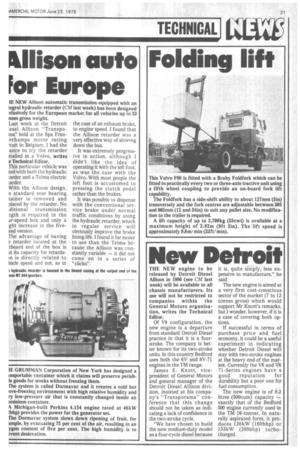New Detroit
Page 23

If you've noticed an error in this article please click here to report it so we can fix it.
THE NEW engine to be released by Detroit Diesel Allison in 1980 (see CM last week) will be available to all chassis manufacturers. Its use will not be restricted to companies within the General Motors organisation, writes the Technical Editor.
Of V8 configuration, the new engine is a departure from standard Detroit Diesel practice in that it is a fourstroke. The company is better known for its two-stroke units. In this country Bedford uses both the 6V and 8V-71 engines in the TM range.
James E. Knott, vicepresident of General Motors and general manager of the Detroit Diesel Allison division, insisted at his company's "Transporama" conference that this change should not be taken as indicating a lack of confidence in the two-stroke cycle.
"We have chosen to build the new medium-duty model as a four-cycle diesel because it is, quite simply, less expensive to manufacture," he said.
The new engine is aimed at a very first cost-conscious sector of the, market (7 to 12 tonnes gross) which would support Mr Knott's remarks, but I wonder, however, if it is a case of covering both options.
If successful in terms of purchase price and fuel economy, it could be a useful experiment in indicating whether Detroit Diesel will stay with two-stroke engines at the heavy end-of the market. Currently the V6 and V8 71-Series engines have a good reputation for durability but a poor one for fuel consumption.
The new engine is of 8.2 litres (500cuin) capacity — exactly that of the Bedford 500 engine currently used in the TM 16-tonner. In naturally aspirated form, it produces 120kW (160bhp) or 153kW (205bhp) turbocharged.




































































































































































